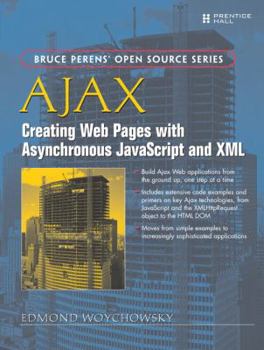AJAX: Creating Web Pages with Asynchronous JavaScript and XML (Bruce Perens' Open Source Series)
The Easy, Example-Based Guide to Ajax for E very Web Developer Using Ajax, you can build Web applications with the sophistication and usability of traditional desktop applications and you can do it... This description may be from another edition of this product.
Format:Paperback
Language:English
ISBN:0132272679
ISBN13:9780132272674
Release Date:January 2006
Publisher:Prentice Hall PTR
Length:384 Pages
Weight:1.75 lbs.
Dimensions:1.0" x 7.1" x 9.2"












